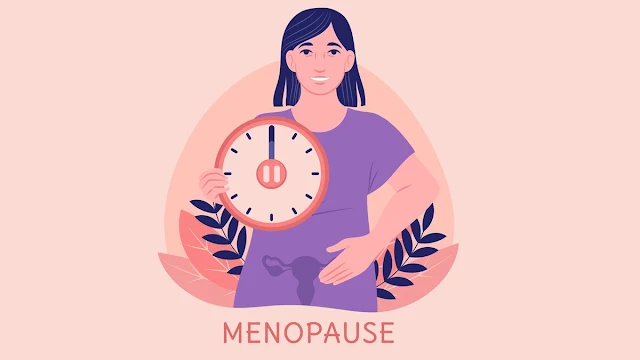Understanding and Managing Menopause and Its Symptoms
Menopause is a natural biological process that marks the end of a woman’s reproductive years. While it is a normal part of aging, menopause can bring a wide array of physical and emotional changes. Understanding menopause and learning how to manage its symptoms can significantly enhance quality of life during this transitional phase. This article provides a comprehensive guide to understanding menopause, its symptoms, and strategies for managing them.
What is Menopause?
Definition and Overview
Menopause occurs when a woman has not had a menstrual period for 12 consecutive months, typically occurring between the ages of 45 and 55. It signifies the end of ovulation and the decline of reproductive hormones like estrogen and progesterone.
Phases of Menopause
- Perimenopause: The transitional period leading up to menopause, marked by fluctuating hormone levels and irregular menstrual cycles.
- Menopause: The point when a woman has gone 12 months without menstruating.
- Postmenopause: The years following menopause, when symptoms may ease but long-term health risks, such as osteoporosis, may increase.
Common Symptoms of Menopause
Physical Symptoms
- Hot Flashes and Night Sweats: Sudden feelings of heat, often accompanied by sweating and flushed skin.
- Sleep Disturbances: Insomnia or disrupted sleep caused by hormonal changes or night sweats.
- Vaginal Dryness and Discomfort: Thinning vaginal tissues leading to dryness, itching, and pain during intercourse.
- Changes in Weight and Metabolism: Tendency to gain weight due to slower metabolism and changes in body composition.
- Hair and Skin Changes: Thinning hair and dry, less elastic skin.
Emotional and Cognitive Symptoms
- Mood Swings: Increased feelings of irritability, anxiety, or depression.
- Memory Issues and Brain Fog: Difficulty concentrating and lapses in memory.
- Loss of Libido: Decreased interest in sexual activity due to hormonal changes.
Managing Menopause: Lifestyle Strategies
1. Diet and Nutrition
- Balanced Diet: Emphasize fruits, vegetables, lean proteins, and whole grains.
- Calcium and Vitamin D: Support bone health with calcium-rich foods and supplements.
- Limit Caffeine and Alcohol: These can exacerbate hot flashes and disrupt sleep.
- Phytoestrogens: Found in foods like soy, flaxseeds, and legumes, these can mimic estrogen and may reduce symptoms.
2. Regular Exercise
- Aerobic Exercise: Improves cardiovascular health and helps manage weight.
- Strength Training: Maintains muscle mass and bone density.
- Yoga and Mindfulness: Reduces stress, improves flexibility, and promotes mental clarity.
3. Sleep Hygiene
- Create a Relaxing Routine: Avoid screens and stimulating activities before bed.
- Control Room Temperature: Keep the bedroom cool to combat night sweats.
- Use Sleep Aids Cautiously: Consider natural remedies like melatonin under a doctor’s guidance.
Medical and Alternative Treatments
1. Hormone Replacement Therapy (HRT)
HRT involves the administration of estrogen and sometimes progesterone to alleviate symptoms like hot flashes, vaginal dryness, and osteoporosis risk. While effective, it carries risks such as blood clots and certain cancers. Discuss with a doctor to weigh benefits against risks.
2. Non-Hormonal Medications
- Antidepressants: Certain SSRIs and SNRIs can help manage mood swings and hot flashes.
- Gabapentin and Clonidine: May reduce hot flashes and night sweats.
3. Alternative Therapies
- Herbal Remedies: Black cohosh and red clover are popular but should be used with caution.
- Acupuncture: Some women find relief from hot flashes and sleep disturbances.
- Supplements: Omega-3 fatty acids and magnesium may support overall well-being.
Addressing Emotional and Cognitive Challenges
Managing Mood Swings
- Practice stress-reducing techniques such as meditation, deep breathing, or journaling.
- Engage in social activities and build a support network.
Improving Memory and Focus
- Stay mentally active with puzzles, reading, or learning new skills.
- Maintain a consistent sleep schedule to boost cognitive function.
Long-Term Health Considerations
1. Bone Health
Menopause increases the risk of osteoporosis due to lower estrogen levels. Regular weight-bearing exercises and a diet rich in calcium and vitamin D are essential.
2. Heart Health
Postmenopausal women face a higher risk of cardiovascular diseases. Maintain a heart-healthy lifestyle with a balanced diet, exercise, and regular health check-ups.
3. Regular Screenings
- Mammograms, Pap smears, and bone density tests become increasingly important during and after menopause.
- Monitor blood pressure, cholesterol levels, and glucose to detect early signs of potential health issues.
Building a Support System
1. Communicate with Loved Ones
Sharing experiences with family and friends can foster understanding and support.
2. Join Support Groups
Connect with others going through similar experiences for encouragement and advice.
3. Consult Healthcare Professionals
Regular consultations with a gynecologist, endocrinologist, or therapist can provide personalized guidance and care.
Embracing Postmenopause
The postmenopausal phase can be a time of renewal and freedom. With no menstruation to manage and reduced risk of pregnancy, many women explore new hobbies, careers, or travel opportunities. Staying proactive about health and well-being ensures that this stage of life is fulfilling and vibrant.
Conclusion
Menopause is a significant life transition that requires understanding and adaptation. By recognizing symptoms and employing a combination of lifestyle changes, medical treatments, and emotional support, women can navigate this phase with confidence and vitality. Open communication with healthcare providers and loved ones ensures a smoother journey into this new chapter of life.
href="https://https://slickquiver.com/kpy542ijrm?key=374ad52b1da5daf69e0cea67de52cbfc.googleusercontent.com/img/b/R29vZ2xl/AVvXsEgmTpj3k8197cRaFh-fDsfRDgmMalZ3ixtlaBBq7VNXuuub_t08iIZsLA9dXV3tiHVkxY4z5QAJV4tdC-oZtM7rbr18w6TM89rK4xmogPhAagszBSrSYwbmv35Xbk9Tsp-UwJVYVdJCc1wUePvG4GrVwG1f6PZX5DcgLrmTBmFwcNjU0ZTKFEWfvUu840da/s355/images.jpg" imageanchor="1" style="margin-left: 1em; margin-right: 1em;" target="_blank">


.jpeg)


.png)
